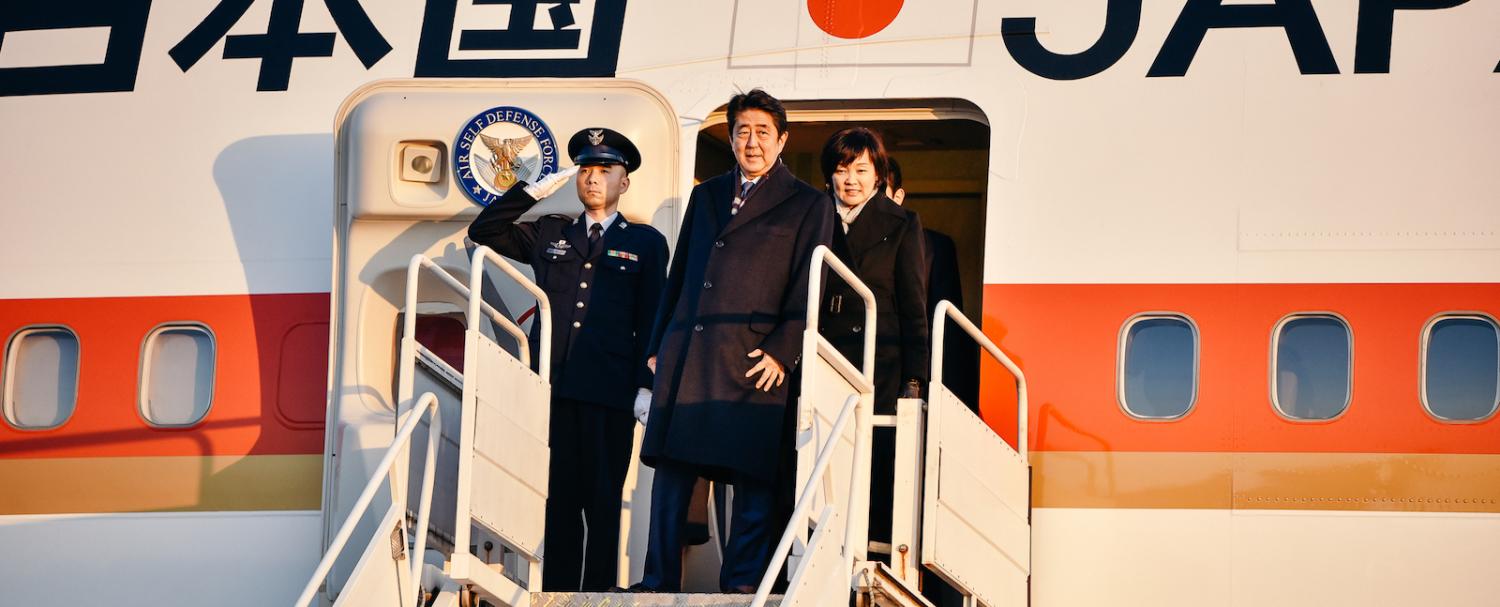Japanese Prime Minister Shinzo Abe’s recent visit to Darwin was rightly billed as historic and “deeply symbolic”. It also delivered some substance, with the announcement of important deals on the financing of regional infrastructure and on deepening cooperation on maritime security. It did not, however, see the signing of the long-anticipated Reciprocal Access Agreement (RAA).
There are good reasons to think this agreement will be concluded at some point soon, as there is no doubt that momentum has been restored to the defence and security partnership in the wake of the failed Soryu submarine deal in 2016.
These developments are signs of a growing convergence of perceptions about the security challenges faced in the Indo-Pacific region in Canberra and Tokyo.
The most recent Foreign and Defence Ministers 2+2 meeting, held on 10 October, affirmed that both countries are committed not just to safeguarding a “free, open, stable, and prosperous Indo-Pacific” but also to collaborative efforts with the US to compete with China’s Belt and Road Initiative (BRI), and to more complex joint exercises, including in air defence and anti-submarine warfare. In 2017 and 2018, Australian and Japanese troops were also involved in major multilateral exercises, notably Talisman Sabre and the Philippines-based Balikatan.
These developments are signs of a growing convergence of perceptions about the security challenges faced in the Indo-Pacific region in Canberra and Tokyo.
Both are anxious about Beijing’s behaviour in the South China Sea, its military and diplomatic push into the Indian Ocean, and the potential adverse consequences of its BRI project for regional economies and societies. Both are worried, albeit in private, about the impact of the Trump administration’s threat to wage a trade war against China and the possible effects of a shift from multilateral frameworks for trade and investment to more transactional bilateral deals. Quietly, both are concerned about Washington’s ability to defend its regional interests and Beijing’s apparent growing willingness to interfere in the domestic politics of regional states, including Australia.
Together, these perceptions have driven deeper cooperation despite different geostrategic circumstances. Japan’s security predicament is, as one commentator recently noted, “acute”. Its geographical proximity to China and the escalating dispute over the Senkaku Islands (claimed by Beijing as the Diaoyu Islands) has led to regular Chinese military intrusions into territorial waters and airspace long claimed and administered by Japan. Canberra’s relations with Beijing, by contrast, are conditioned by its physical distance from Northeast Asia, the absence of a territorial dispute, and the value of China’s market for Australia’s goods.
Despite these differences, Australia and Japan are coming to recognise that a region-wide approach is necessary for managing China’s assertiveness and ambition. It is manifestly in the interests of both – as well as of India, South Korea, Taiwan, and most Southeast Asian states – to ensure that sea lanes remain open, territorial aggrandisement is not accepted, and fishing and other rights are maintained. The work already being done – unilaterally by Japan and the US, and in collaboration with other states, including Australia – to provide Southeast Asian and indeed Pacific island states with the capacity to effectively monitor their territorial waters and address illegal fishing as well as other criminal activities is a good start, but more must follow if maritime security is to be enhanced and further encroachments by Beijing deterred.
It is also in the interests of both countries to work together, as well as with the US, to deliver better regional infrastructure and connectivity. Japan has almost half a century of experience in delivering high-quality aid and development assistance across the Indo-Pacific, on which Australia should draw.
As a recent second-track Australia-Japan dialogue (organised by the Griffith Asia Institute and the National Defense Academy) made clear, Canberra could learn a great deal from Tokyo’s expertise in this area. Better collaboration would help Canberra to begin to address one of Australia’s biggest challenges: directing a significant proportion of its capital, especially in superannuation funds, into the region, and away from the traditional European and North American destinations for investment. It would also go a long way to ensuring that there is robust competition for China’s BRI projects, helping to keep standards high.
Finally, it is also to Australia’s and Japan’s advantage to ensure that their militaries can work together as effectively as possible should contingencies arise.
In this context, the continued delay in concluding the RAA is a concern. Such agreements are intended to make clear the legal status of visiting foreign military personnel, ensuring that procedures exist should individuals be detained by local police or become subject to criminal charges. These are important facilitators of the joint exercises and exchanges of personnel needed to build interoperability.

